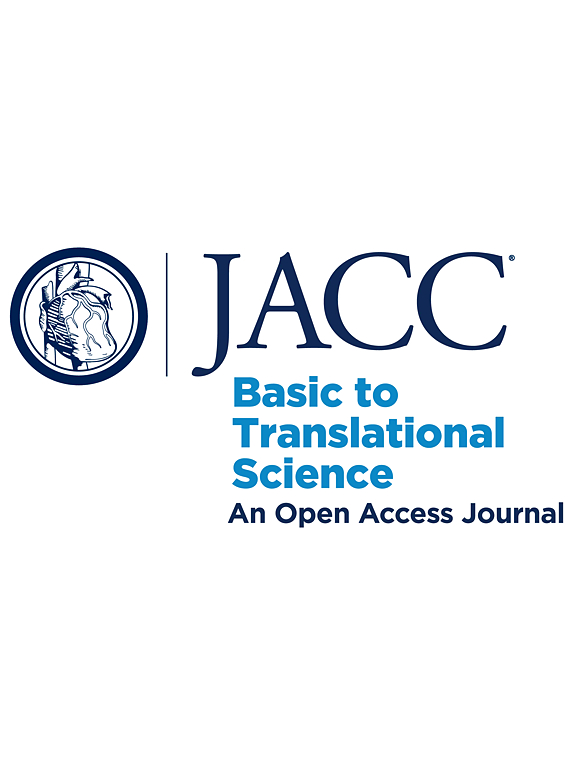基于结构的探针揭示了 ATTR 淀粉样变性患者血浆中存在大量的转甲状腺素聚集体
IF 8.4
1区 医学
Q1 CARDIAC & CARDIOVASCULAR SYSTEMS
引用次数: 0
摘要
淀粉样蛋白转甲状腺素(ATTR)淀粉样变性病是一种无情的渐进性疾病,由淀粉样蛋白转甲状腺素的错误折叠和全身蓄积成淀粉样纤维引起。这些纤维导致多种临床表型,主要是心肌病和/或多发性神经病。人们对转甲状腺素在疾病发展过程中的聚集以及这是否会对诊断和治疗产生影响知之甚少。利用成熟 ATTR 纤维的低温电子显微镜结构,我们开发了一种用于纤维检测的肽探针。利用这种探针,我们在 ATTR 淀粉样变性患者的血浆中鉴定出了以前未知的聚合转甲状腺素。这些物质体积大、非原生、与单体和四聚体转甲状腺素不同。我们的研究结果揭示了有关 ATTR 淀粉样变性生物学的许多问题,并揭示了一个潜在的诊断和治疗靶点。本文章由计算机程序翻译,如有差异,请以英文原文为准。
Structure-Based Probe Reveals the Presence of Large Transthyretin Aggregates in Plasma of ATTR Amyloidosis Patients
Amyloidogenic transthyretin (ATTR) amyloidosis is a relentlessly progressive disease caused by the misfolding and systemic accumulation of amyloidogenic transthyretin into amyloid fibrils. These fibrils cause diverse clinical phenotypes, mainly cardiomyopathy and/or polyneuropathy. Little is known about the aggregation of transthyretin during disease development and whether this has implications for diagnosis and treatment. Using the cryogenic electron microscopy structures of mature ATTR fibrils, we developed a peptide probe for fibril detection. With this probe, we have identified previously unknown aggregated transthyretin species in plasma of patients with ATTR amyloidosis. These species are large, non-native, and distinct from monomeric and tetrameric transthyretin. Observations from our study open many questions about the biology of ATTR amyloidosis and reveal a potential diagnostic and therapeutic target.
求助全文
通过发布文献求助,成功后即可免费获取论文全文。
去求助
来源期刊

JACC: Basic to Translational Science
CARDIAC & CARDIOVASCULAR SYSTEMS-
CiteScore
14.20
自引率
1.00%
发文量
161
审稿时长
16 weeks
期刊介绍:
JACC: Basic to Translational Science is an open access journal that is part of the renowned Journal of the American College of Cardiology (JACC). It focuses on advancing the field of Translational Cardiovascular Medicine and aims to accelerate the translation of new scientific discoveries into therapies that improve outcomes for patients with or at risk for Cardiovascular Disease. The journal covers thematic areas such as pre-clinical research, clinical trials, personalized medicine, novel drugs, devices, and biologics, proteomics, genomics, and metabolomics, as well as early phase clinical trial methodology.
 求助内容:
求助内容: 应助结果提醒方式:
应助结果提醒方式:


